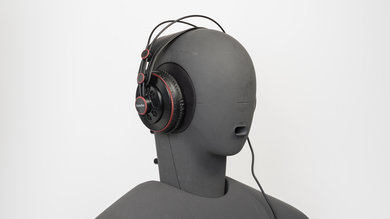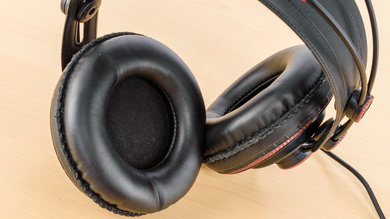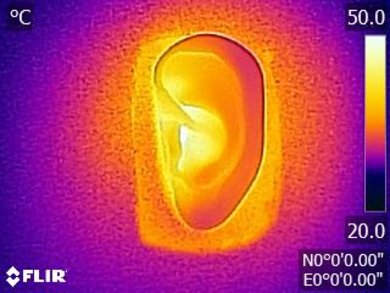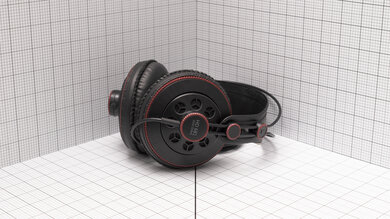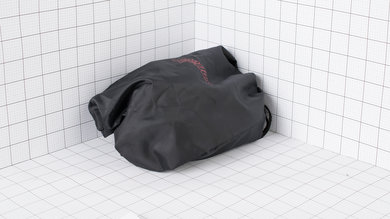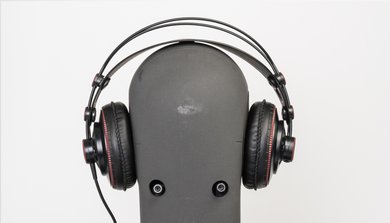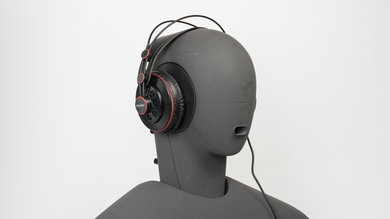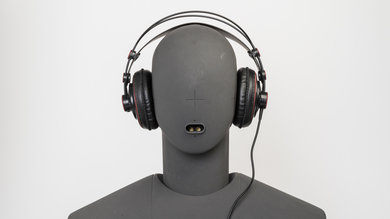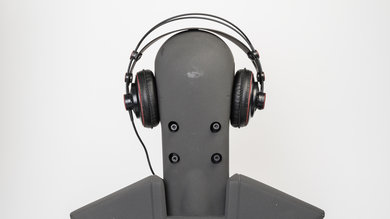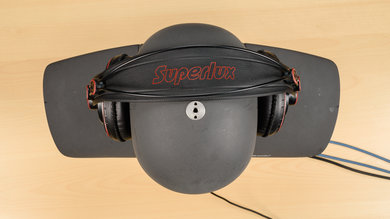The Superlux HD 681 are budget-friendly, entry-level audiophile headphones. They stand out from the crowd thanks to their semi-open-back design, which helps them create an immersive audio experience. At the same time, they leak less audio than fully open-back headphones, which is handy if you don't want to disturb others around you. However, their build quality reflects their bargain price, so don't expect very durable headphones.
Our Verdict
The Superlux HD 681 are very good for neutral sound. These headphones have a semi-open-back design, allowing audio to escape from the ear cups and interact with your environment, creating a natural and immersive audio experience. While they lack low-bass rumble, their mid-range response has fantastic compliance with our target curve, so vocals and lead instruments sound clear and natural. Their treble range compliance is more inconsistent, though, and sibilants, like cymbals, can sound harsh and overly-bright.
- Natural and open passive soundstage.
- Deliver audio consistently.
- Comfortable fit.
- Non-detachable audio cable.
The Superlux HD 681 aren't intended for commuting or traveling. They have a semi-open-back design designed to leak audio and let in ambient sound. That means that you'll hear everything that's going on around you while passengers can also hear your audio. The headphones aren't very well-built either and have a bulky design that's hard to transport. However, they have a comfortable fit.
- Comfortable fit.
- Disappointing build quality.
- Not intended to block out background noise.
- High leakage, by design.
The Superlux HD 681 aren't a very good choice for sports and fitness. They're audiophile headphones and can easily fall off of your head with moderate movement. Their audio cable can also snag on something and yank them from your head.
- Comfortable fit.
- Can fall off of your head with moderate movement.
- Disappointing build quality.
- Not intended to block out background noise.
The Superlux HD 681 are poor for office use. They leak audio by design, so others around you will hear what you're listening to, and they don't block out background noise, meaning you'll hear all the details of chatty coworkers talking. On the upside, they're comfortable enough for long days at the office.
- Comfortable fit.
- Disappointing build quality.
- Not intended to block out background noise.
- High leakage, by design.
The Superlux HD 681 are wired headphones; you can't use them wirelessly.
The Superlux HD 681 are passable for wired gaming, so long as you don't need mic support or if you have your own standalone mic. They have a comfortable fit, and their neutral sound ensures that dialogue and instruments are accurately reproduced. Thanks to their semi-open-back design, they can also create a wide and natural soundstage, which can immerse you in your gameplay.
- Natural and open passive soundstage.
- Deliver audio consistently.
- Comfortable fit.
- Disappointing build quality.
- Not intended to block out background noise.
- No mic.
The Superlux HD 681 can't be used for phone calls by default since they don't have a mic. However, if you have a separate mic, these headphones have a comfortable fit, and their neutral sound ensures that speech is natural and clear.
Changelog
-
Updated Jul 29, 2025:
We've updated the Sound Profile box with a link to a downloadable folder of EQ settings that will help you match these headphones' frequency response to different target curves available in our Graph Tool.
-
Updated Dec 09, 2024:
The following test groups have been updated following Test Bench 1.6 and 1.7: Wired Connection, Noise Isolation - Full Range, Noise Isolation - Common Scenarios, and ANC Wind Handling. In addition, several Sound tests have been updated following Test Bench 1.8. There have also been text changes made throughout the review, including to the usages and product comparisons to match these results.
- Updated Dec 02, 2024: We've converted this review to Test Bench 1.8, which updates our target curve and Sound tests. You can read more about this in our changelog.
- Updated Nov 27, 2024: We've converted this review to Test Bench 1.7, which updates our Noise Isolation test. We've also expanded the scope of this test to include Common Scenarios in addition to Voice Handling and Wind Handling.
Check Price
Differences Between Sizes And Variants
The Superlux HD 681 come in one color variation: 'Black'. Please let us know in the forums if you encounter another variant of these headphones.
Popular Headphones Comparisons
If you're looking to dip your toes into high-res audio without breaking the bank, these cans have a semi-open-back design that helps create an open and natural soundstage that makes for a more immersive audio experience. Their sound profile is also neutral enough for a variety of audio content, although they sound a lot brighter than the Superlux HD 681 HD EVO. They're more comfortable than the Superlux HD 668B, which is good if you want to use them for long listening sessions. However, their plasticky build quality reflects their affordable price.
Check out our recommendations for the best headphones under $50, the best budget wireless headphones, and the best wired headphones.
The Superlux HD 681 are better for neutral sound than the Samson SR850. Both headphones have a similar semi-open design, but the Superlux have a more balanced sound profile, which some may prefer. They're also much more comfortable and breathable. However, the Samson have a significantly better build quality.
The Superlux HD 668B and the Superlux HD 681 are both very good headphones if you like a balanced sound. While they both can sound quite harsh and sharp, the HD 668B feature a slightly bassier default sound. While both have a similarly disappointing build quality, the HD 681 are a fair bit more comfortable to wear.
While the Superlux HD 681 and the Superlux HD 681 EVO are similarly performing headphones, the HD 681 are better for neutral sound. They have a more balanced sound and a more natural passive soundstage. However, the HD 681 EVO have slightly better build quality and are a bit more stable on your head.
The Philips SHP9500 are somewhat better for neutral sound than the Superlux HD 681. The Philips are more comfortable, more breathable open-back headphones with a considerably better build. Sound is perceived as much more open and spacious as well. They share a similar sound profile that features balanced and articulate mids at the expense of bass extension and an overly-bright treble range.
Test Results

The Superlux HD 681 look very similar to the AKG K240 MKII, thanks to the double wire headband and ski-band headband design. Their ear cups are nearly identical to the Superlux HD 668B, with the same circular enclosure design, but have red detailing to help it stand out from other budget-friendly headphones on the market. However, due to their plasticky build, their red and black color scheme looks cheap.
These headphones fit comfortably and are even more comfortable than the Superlux HD 668B. They're just as lightweight but have a better headband design that extends further and doesn't feel as tight on the head. They also have large ear cups that fit well around most listeners' ears. Unfortunately, the ear cup padding feels a bit stiff and can cause a bit of uneven pressure. While the padding isn't particularly uncomfortable, it's noticeable after wearing them for a while.
These cans have fair breathability. Thanks to their semi-open-back design, they allow some airflow to circulate within the ear cup. While they won't cause you to sweat if you wear them for long periods, they're not as breathable as open-backs like the Philips SHP9500.
These cans have a disappointing build quality, though it's to be expected from at this price point. Like the Superlux HD 668B, they're made of low-grade plastic with no metal components and even feel like a cheaper version of the AKG K240 MKII. They won't break if you accidentally drop them once or twice. However, they don't feel like durable headphones.
These cans aren't as tight on the head as the Superlux HD 668B and are slightly less stable. It won't be a problem if you're listening to audio at your desk, but if you like to bop your head to the music, the ear cups can change in positioning. The audio cable isn't detachable either, so if it gets snagged on something, the headphones will be pulled from your head.
These cans have a neutral sound with bright sibilants. Even though they're semi-open-back headphones, they can reproduce a lot of low-bass, ensuring that tracks get adequate thump, rumble, and boom. Vocals and instruments also sound clear, natural, and accurate. Sibilants like cymbals are piercing, though.
If you'd like to tame the treble, boost the bass, or otherwise bring the frequency response of these headphones into line with one of the target curves shown on our Graph Tool, this downloadable folder of EQ presets will help.
These headphones have good consistency performance. If you have thick hair or wear glasses, you may notice a drop in bass, as these features can disrupt the ear cups' seal on your head. However, once you achieve a good fit, you'll experience more consistent audio delivery.
These headphones do a decent job of complying with our bass range target. The response is underemphasized across the entire range, though it's tilted in such a way that the low-bass is particularly lacking. As a result, there's not much in the way of bass-range rumble, though this is to be expected from semi-open-back headphones.
These cans have excellent mid-range compliance with our target curve. The response is pretty flat and neutral, so vocals and instruments are present, natural, and detailed in mixes. In songs like My Sharona by The Knack, male vocalists sound detailed and clear throughout the track.
The Superlux HD 681 have fair treble compliance with our target. A dip in the low-treble weakens the upper harmonics of vocals and lead instruments. However, the mid-treble is much more overemphasized, and sibilants like cymbals are piercing. In songs like Stairway to Heaven by Led Zeppelin, the electric guitar is overpowered by piercing snares, which are overly present in the track.
The peaks and dips performance of these headphones is good. The peaks and dips are fairly minor in the bass and mid ranges, with a dip in the mid-mid nudging vocals and instruments to the back of the mix. However, there's a peak between the high-mid to low-treble, making vocals and instruments sound harsh. A dip in the low-treble affects both drivers and removes some of the harmonic richness from vocals and lead instruments. However, the peaks in the mid-treble make sibilants, like hi-hats, sound piercing.
The imaging performance of these headphones is great. Even though we haven't tested very many Superlux headphones, those we have tested display solid imaging, which is an indicator of ergonomics and quality control. Imaging varies between units, though. That said, our unit's L/R drivers are well-matched in group delay, amplitude, frequency, and phase response, ensuring the accurate localization of sound objects like instruments in the stereo image. Peaks in the phase's response's high-treble range aren't audio with real-life content either, especially since they affect narrow frequency bands, and we lose sensitivity to this range over time.
The passive soundstage performance of these cans is very good. Their semi-open-back design allows them to create a wide, open, and natural soundstage that's more immersive than the Superlux HD 681 EVO.
The weighted harmonic distortion performance is good. At normal volumes, you'll experience clean and pure audio reproduction. However, if you push these cans to a high volume, there's some distortion present in the high-bass to low-mid range. It's hard to hear with real-life content, though.
These are the settings used to test these cans. Our results are only valid when used in this configuration.
The Superlux HD 681 have bad full-range noise isolation by design. They're not meant to block out background noise as they have a semi-open-back design, so if you're using them near an open window with traffic outside or next to people talking, you'll hear everything. They attenuate slightly better against treble range noises, but these sounds will still be audible.
These headphones have a poor noise isolation performance in common scenarios. They provide very little attenuation regardless of the situation, whether it's an aircraft cabin, busy street, or office environment. Their design will slightly muffle the treble range of external noise, but there's practically no attenuation against bass and mid-range frequencies.
These headphones are meant to leak audio by design to create a more immersive audio experience. Even at regular volumes, people around you will hear your audio.
These headphones have a non-detachable 1/8" TRS cable. Their latency via this connection type is very low, so you won't experience any sync issues between your audio and video.
You can connect these headphones to your PC via analog, but you'll only receive audio. They don't have a mic.
These headphones only support audio via analog if you plug their TRS cable into your controller's AUX port. They don't have a mic, though.

